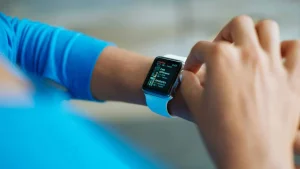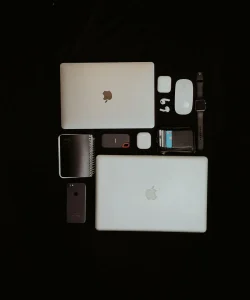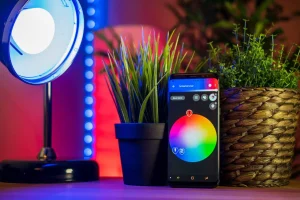How To Say You Are Beautiful In Italian: A Complete Guide
I still remember the embarrassment. I was in Florence, standing in front of a gelateria, trying to compliment the server on her incredible patience as I butchered the name of every single flavor. I cobbled together some high school Italian and what came out was a mess. She just smiled politely. That’s when I realized that knowing how to say you are beautiful in italian is about so much more than just stringing words together. It’s an art form, a dance of culture, grammar, and genuine sincerity. And I was a terrible dancer.
The Art of Complimenting in Italian: Beyond “Beautiful”
Italian is a language that sings. It’s packed with emotion and expression, and compliments are no exception. Just saying the words isn’t enough; it’s about the feeling behind them. You can’t just translate an English compliment and expect it to land with the same weight. The Italian approach is more holistic, considering the context, the person, and the specific quality you’re admiring. It’s less a transaction and more an offering, a small gift of words to appreciate a moment or a person. Forget rigid formulas.
Why Learning Italian Compliments Matters
So, why bother? Why not just stick to “ciao” and “grazie”? Because language is connection. Making the effort to offer a genuine, well-phrased compliment in someone’s native tongue breaks down barriers. It shows you see them, you appreciate their culture, and you’re trying to engage on a deeper level. Whether you’re on holiday, meeting family, or just trying to be a more engaged human, understanding the nuances of saying beautiful in Italian can transform a simple interaction into a memorable connection. Honestly, it’s one of the most powerful tools when you are learning how to say you are beautiful in italian.
Direct Translations: “Beautiful” for People and Things
Let’s start with the basics. The most direct way to call someone beautiful is “Sei bella” (for a woman) or “Sei bello” (for a man). “Sei” (say) means “you are,” and “bella/bello” means “beautiful.” This is your foundation. You can use it for people, but the root word “bello” is also used for objects, experiences, and ideas. A beautiful day? “Una bella giornata.” A good film? “Un bel film.” It’s an incredibly versatile and fundamental word in the Italian vocabulary.
Understanding Gender Agreement: “Bello” vs. “Bella”
Okay, here’s the first hurdle where many learners stumble. Italian grammar is big on gender agreement. Nouns, and the adjectives that describe them, are either masculine or feminine. It’s a non-negotiable rule. The core of the bella vs bello italian grammar debate is simple: if you are talking to or about a woman, you use “bella.” If you are talking to or about a man, you use “bello.” So, if you want to know how to say you are handsome in italian, the answer is simply “Sei bello.” For a group of women, it becomes “Siete belle” (plural). For a group of men, “Siete belli.” What about a mixed group? Italian defaults to the masculine plural: “Siete belli.” It is what it is.
When to Use “Bello” for Objects and Scenery
The use of “bello” isn’t confined to people. Far from it. This is where the language truly shows its love for aesthetics. You can stand before the Colosseum and murmur, “Che bello” (How beautiful). You can admire a sleek Ferrari and say, “Che bella macchina” (What a beautiful car). A stunning landscape is a “bel paesaggio.” The word adapts to almost any situation where you want to express admiration for something visually pleasing. It’s your all-purpose adjective for appreciating the beauty that Italy throws at you at every turn.
Complimenting Talent: “Bello” vs. “Bravo”
This is a mistake I made constantly. I’d watch a talented street musician and think, “He’s beautiful at playing the violin.” So I’d say “Sei bello.” Wrong. So wrong. “Bello” is for appearance. “Bravo” (or “brava” for a woman) is for skill, talent, or good behavior. If a chef prepares an amazing meal, you say “Bravo!” If your friend gives a great presentation, “Brava!” Using “bello” in that context just sounds like you’re ignoring their talent and only commenting on their looks. A bit awkward. Bravo is for what they do; bello is for how they appear.
Expressing Inner Beauty and Charm in Italian
Sometimes, “beautiful” is too superficial. What if you want to compliment someone’s spirit, their charisma, or that indefinable quality that makes them shine? Italian, of course, has a rich vocabulary for this. You have to move beyond the physical to capture the essence of a person. It shows a much deeper level of observation and appreciation. This is when you start sounding less like a tourist with a phrasebook and more like a real connoisseur of compliments.
When Charm is the Key: “Affascinante”
My personal favorite. “Affascinante” (ah-fah-shee-NAHN-tay) means “fascinating” or “charming.” It’s a sophisticated, powerful compliment that goes straight to the personality. Calling someone “bello” is nice, but calling them “affascinante” means you’re captivated by their entire being—their conversation, their intelligence, their aura. It’s a top-tier compliment that works for any gender and suggests a magnetic quality that is far more compelling than simple good looks. An absolute game-changer.
For Grandeur and Splendor: “Splendido” and “Magnifico”
When “bello” just doesn’t cut it, you need to bring out the big guns. “Splendido/a” and “Magnifico/a” are for moments that take your breath away. That jaw-dropping view from the Amalfi Coast? “Magnifico!” The mosaics inside a cathedral in Ravenna? “Splendido!” You can use them for people too, but it’s very high praise. “Sei splendida” is a way of saying someone looks absolutely radiant or stunning. These words carry weight, so save them for when you really, really mean it.
Sweetness and Cuteness: “Carino” and “Carina”
So, is carino beautiful in italian? The short answer is no. “Carino/a” translates more accurately to “cute,” “pretty,” or “nice.” It’s a lovely, gentle compliment, but it lacks the intensity of “bello.” You might call a child “carino” or a charming little village “un paese carino.” It’s a safe, friendly, and very common compliment. If you say “Sei carina” to a woman, it’s pleasant and sweet. It’s a definite positive, just on a slightly lower rung of the intensity ladder than “bella” or “splendida.”
Formal vs. Informal: Addressing Someone Beautifully
Context is everything. In Italian, you must distinguish between the informal “tu” (used with friends, family, young people) and the formal “Lei” (used with strangers, older people, or in professional settings). This changes your compliment. For a friend, you say “Sei bella.” To compliment a woman you’ve just met in a formal context, you would say “Lei è molto bella,” which is more respectful. Using the wrong form can seem overly familiar or, conversely, a bit cold and distant. When in doubt, start with “Lei.”
Polite Ways to Compliment a Stranger
Approaching a stranger requires a bit of tact. Instead of a direct “You are beautiful,” which can be too intense, you might compliment something specific. “Ha un sorriso bellissimo” (You have a beautiful smile) or “Questo colore Le sta molto bene” (That color suits you very well), using the formal “Lei” form. This is less about their inherent beauty and more about a specific, tasteful observation, which often feels more comfortable and sincere for everyone involved.
Casual Compliments for Friends and Loved Ones
With friends, you can be much more effusive. This is where you can use superlatives. The most common is “Bellissima/o,” which means “very beautiful” or “gorgeous.” The meaning of bellissima in italian is an intensified version of “bella,” and it’s used constantly and warmly among friends. You can also use phrases like “Stai da dio” (You look divine/heavenly) or “Sei uno schianto” (You’re a knockout). These are just a few of the many informal italian phrases for beautiful woman or man that add color and warmth to daily interactions.
Beyond the Basics: Advanced Italian Compliments
Ready to get more poetic? Try “Sei un incanto” (You are a charm/delight) or “Sei uno spettacolo” (You are a spectacle/a sight to behold). These phrases are less about a checklist of features and more about the overall impression a person makes. They are expressive, a little dramatic, and quintessentially Italian. Using one of these shows you have a real feel for the language’s lyrical soul.
Praising Someone’s Style or Elegance
Italians are known for their “bella figura,” the concept of making a good impression, which often ties into style. Complimenting someone’s elegance is highly appreciated. “Sei molto elegante” (You are very elegant) is a classic. Or you can be more specific: “Hai un ottimo gusto” (You have excellent taste). A simple “Che stile!” (What style!) is a cool, casual way to acknowledge someone’s fashionable flair.
Complimenting Intelligence and Personality
Looks fade, but a great personality is forever, right? Show you appreciate more than just the surface. “Sei una persona molto interessante” (You are a very interesting person) or “Amo il tuo senso dell’umorismo” (I love your sense of humor). Complimenting someone’s intelligence (“Sei brillante”) or kindness (“Sei molto gentile”) often means more than any comment about their appearance.
Mastering Italian Pronunciation for Compliments
You can have the perfect phrase, but if the pronunciation is off, it will fall flat. A few tips: the “ce/ci” sounds are soft (like ‘ch’ in ‘cheese’), vowels are always short and pure, and—this is the big one—you have to roll your R’s. And for words like “bella” or “bello,” really emphasize the double consonant. It’s not “bela,” it’s “bel-la.” That small pause and push makes it sound authentic. Practice. Out loud. Your cat won’t judge you.
Tips for Sounding Natural and Sincere
Don’t just recite the words like a robot. Make eye contact. Smile! Your body language and tone of voice are more than half the battle. A compliment that feels forced is worse than no compliment at all. Be specific when you can. Instead of just “Sei bella,” try “I tuoi occhi sono bellissimi” (Your eyes are beautiful). Specificity makes it feel more genuine and less like a generic pickup line. And mean it. People can spot insincerity a mile away.
Putting It All Together: Practice Makes Perfect
The only way to get comfortable is by doing. Start small. Compliment the “bel” cappuccino your barista makes. Tell a friend they look “benissimo.” The more you use these words and phrases in low-stakes situations, the more natural they’ll become. Soon, you won’t even have to think about it. Learning how to say you are beautiful in italian is a journey, not a destination. Each conversation is a chance to practice and connect.
Resources for Further Learning
Mastering the art of the Italian compliment takes time. Watching Italian movies, listening to music, and engaging with native speakers are fantastic ways to absorb the natural rhythm and context of these phrases. But it’s also about understanding the “why.” You might be asking what does bello mean in italian in all its forms, and the answer is a beautiful dive into their culture. If your linguistic curiosity extends beyond Italy, you might also find it fascinating to explore how compliments work in other cultures, for instance by learning how to offer similar praise in German. Every language offers a unique window into what a culture values. Ultimately, the best resource is real-world practice, which is the final step in knowing how to say you are beautiful in italian confidently.
Embrace the Beauty of Italian Compliments
Don’t be afraid to make mistakes. I certainly did. But the effort is always, always appreciated. Embracing the Italian way of complimenting is about more than learning vocabulary; it’s about learning to see and appreciate the beauty in the world and the people around you, and having the words to express it with warmth, style, and heart.







